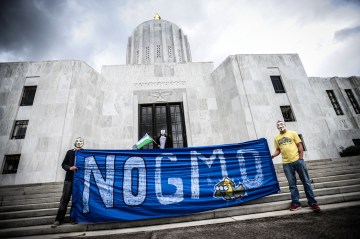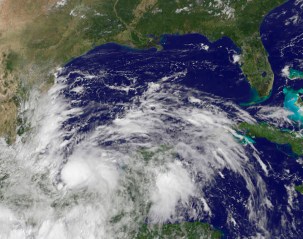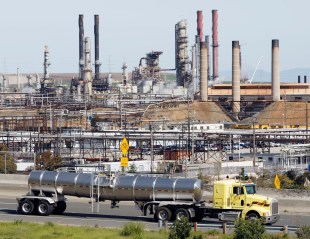See the rest of TIME’s Top 10 of Everything 2013 lists here

10. The anti-genetically modified food movement gains momentum
The food movement is powerful—just look at the number of farmer’s markets and Whole Foods shops in your area—but politically, it’s remained diffuse, unable to challenge the powerful mainsteam farming lobby. Instead, the food movement is flexing its muscles on another area: genetically modified foods (or GMOs, with the O standing for organism). First in California in 2012, then this year in Washington, anti-GMO activists managed to get initiatives on the ballot that would have required labeling of any foods with genetically modified ingredients. Both efforts went down to defeat, after millions of dollars in lobbying by the conventional food industry, but expect more labeling battles in the future—possibly at the national level.
9. Rooftop solar goes mainstream
Long seen as the province of hard-core greens, rooftop solar broke through in 2013. The industry is growing at more than 40% a year, and solar installation companies like Solarcity in California are enjoying sales and stock market success. While the industry has benefitted from the declining price of solar panels, the real innovation has been financial, as customers have been able to take advantage of new leasing programs that eliminated expensive upfront costs. How real is solar? Utilities are worried that distributed solar could disrupt their business just as wireless phones disrupted landlines.
8. The battle over the Keystone XL pipeline drags on
The biggest environmental battle of 2013 was also the biggest environmental battle of 2012. The Keystone pipeline, which would carry Canadian oil sands crude across the border into the U.S., was first proposed in 2008. Five years later, the proposal is still up for debate, with President Obama taking as much time as possible to come to a final decision. That’s largely due to the efforts of green campaigners who have rallied around opposition to the pipeline, less because of what it might do than as a symbol of a fossil fuel future. Right now it looks like Obama might cancel the pipeline—but a long fight has no near end in sight.
7. U.S. oil production beats imports
Every President since Richard Nixon has promised to get the U.S. off foreign oil—and every President since Nixon has failed. But over the last several years, U.S. oil imports have been dropping. That’s due in part to a slower economy, which depresses oil demand, as well as growing efficiency, which reduces oil waste. But much of it can be attributed to the surprising new source of domestic oil, especially in the unconventional tight oil patches in North Dakota and Texas. In November, U.S. oil production officially passed imports for the first time in nearly two decades. It’s not energy independence, but it’s close.

6. An historically quiet Atlantic hurricane season
Forecasters predicted an “active or extremely” active Atlantic hurricane season this year, which translates to 7 to 11 hurricanes—three to six of them major. But in the end there was virtually nothing. Just two hurricanes formed, both minor ones, and no storm caused major damage to North America. On the whole, the Atlantic seems to be in a hurricane trough. For all the damage caused by Superstorm Sandy, even that wasn’t a particularly strong storm, just one that landed in a very vulnerable region. A major hurricane hasn’t made landfall in the U.S. since 2005, one of the longest such droughts on record.
5. But a very busy and destructive Pacific typhoon season
Even as those of us in the Atlantic region got to enjoy an unusually quiet hurricane season, the western Pacific was being hit by typhoon after typhoon. (What’s the difference between a hurricane and a typhoon? Nothing; they’re just the names given to the same storms in different parts of the world.) At least 12 typhoons formed in the Pacific in 2013, and a number of them made landfall. No country suffered more than the Philippines, the Southeast Asian nation that is in the typhoon equivalent of tornado alley. Supertyphoon Haiyan—perhaps the strongest storm ever—scored a direct hit on the Philippines in early November, killing at least 2,500 people and causing billions of dollars in damages.
4. Intergovernental Panel on Climate Change releases first chapter of its new global warming assessment
About every five years, hundreds of scientists get together to review the latest research on climate change. The result of that unpaid effort, the IPCC assessment, represents the consensus thought on the science of global warming. At this point the reports deliver diminishing returns—the basics of man-made global warming are pretty well settled. But the latest report did have some interesting conclusions, reflecting growing debate in the scientific community over the connection between climate change and tropical storms, as well as the question of why the planet hasn’t warmed over the past several years as fast as models predicted.
3.Carbon dioxide concentration in the atmosphere passes 400 parts per million
Since 1958, the Mauna Loa Observatory in Hawaii has been tracking the concentration of CO2—the main greenhouse gas—in the atmosphere. Levels in pre-industrial time—before we began burning fossil fuels en masse—were about 280 parts per million (ppm). Since then, they’ve skyrocketed, and late this May, concentrations passed 400 ppm. CO2 concentrations haven’t been this high for millions of years, and scientists warn that if we pass 450 ppm, there may be no way to prevent very dangerous climate change. We’re well on our way toward that grim future.
2. EPA begins work on climate regulations
With the failure of a national cap and trade program, the Obama Administration has fallen back to what it has called a second-best solution: direct regulation of carbon dioxide. Rules proposed in September would all but outlaw new coal-fired power plants, unless they have the ability to capture and sequester the carbon they emit. Unsurprisingly the coal industry is fighting back, and that battle could take a long time to play out. Still, the regulations push will help the U.S. keep reducing its carbon emissions, which have been on the decline for years.

1. California launches cap-and-trade
Carbon cap and trade—which puts a steadily declining limit on greenhouse gas emissions—was once going to be the big national plan to address climate change. That died in 2010, when a national cap and trade system failed in the Senate. But in 2013, the biggest state in the U.S. embarked on its own carbon trading system. California has legally committed itself to reducing its carbon emissions to 1990 levels by 2020, and it’s going to use a market system to do so, acting in conjunction with other West Coast states and Canadian provinces. If the Golden State and its friends in the neighborhood can pull it off, maybe one day the rest of the country will follow.
Think we missed something? Tell us using hashtag #TIME2013
Follow @TIME

